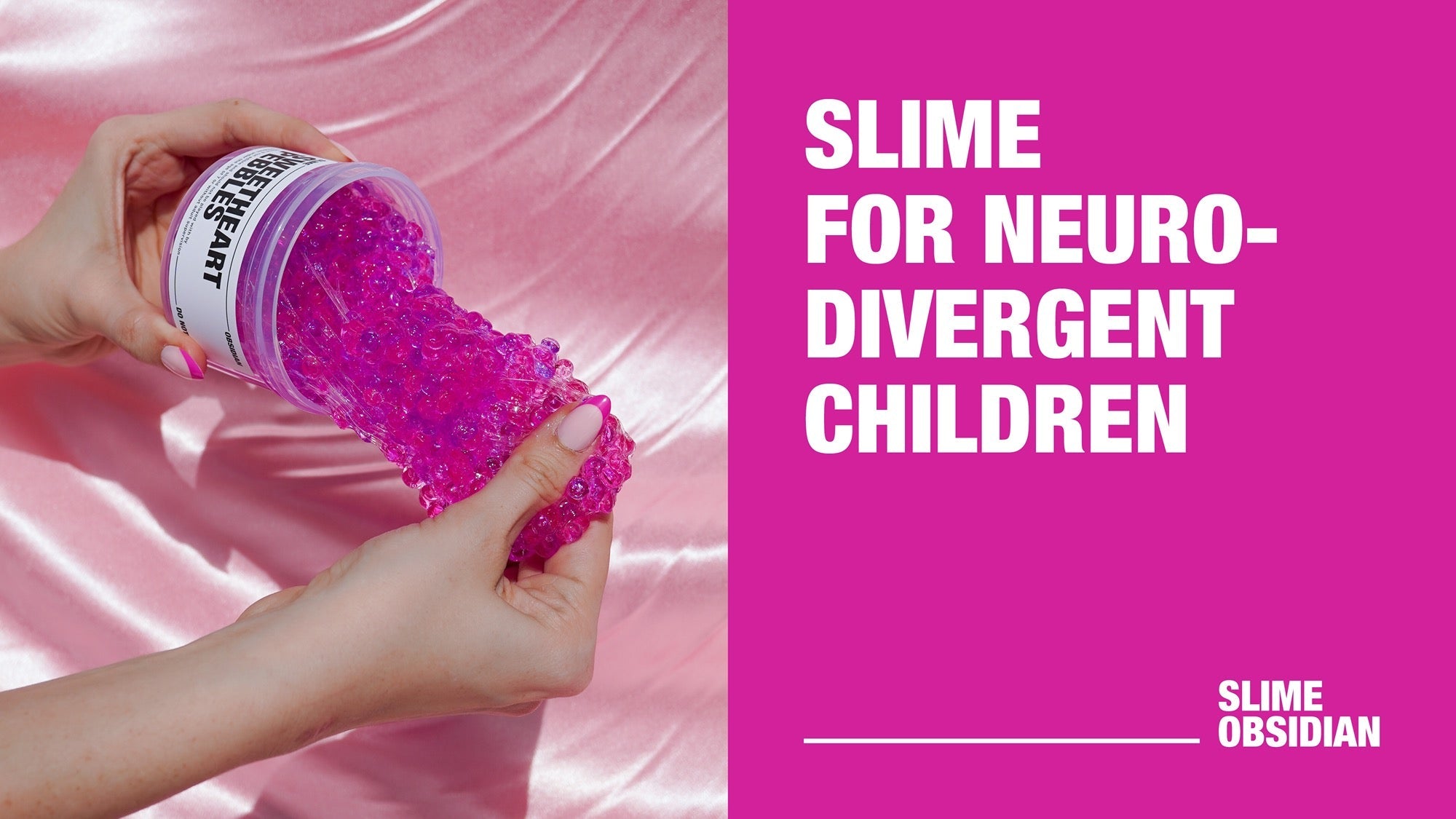Playing with slime is beneficial for any age group: from developing toddlers learning new motor-skills, to elderly patients using it to help calm symptoms of dementia. There is no denying the many benefits of slime but what about children who may observe & explore the world through a different sensory lens? How do they interact with and benefit from this highly stimulating and squishy phenomenon?
Playing with slime allows autistic children opportunities for “hands on” learning & displaying creativity:
Members of Pfizer's Autism and Neurodevelopmental Disorders Lab implemented a “slime station” at an informational event hosted by the Bright Horizons child care center located in Groton, Connecticut. This event was held for parents whose families are affected by autism. The DIY-styled activation involved children with different neurological variations trying on safety goggles and gloves, creating, playing, exploring, and discussing the properties of slime, while learning about how scientists test the same properties using experimental methods.
Their findings were filled with exuberance; playing with the slime they made from scratch was not only an educational, but an exhilarating experience for all the young “scientists” involved. Upon gathering the event’s feedback, one participant stated, “'This is the best day of my life — I love slime!'
Slime transforms “work” into “play”
Children with developmental disabilities will find that playing with colorful, oozing, slime doesn’t feel like “work,” when needing to practice hand strength, synchronization of specific muscle movements, and/or their hand-eye coordination skills.
Additionally, children who require non-standard ways of learning and approaching problem solving, may often feel restless and agitated without some sort of fidget toy. Slime is the perfect solution to decrease frustration for those who feel they need a sensory object in hand at all times to help stay calm and focused in their surroundings.
Fluffy, slimy, goopy, oozing...the endless descriptive words of slime can help teach new vocabulary that children will be especially inclined to learn because it’s about their favorite toy! Slime also teaches pretend-play skills, and can be easily incorporated into playtime with siblings at home and/or classmates at school- while simultaneously increasing communication skills and frequency of play. It’s not only siblings who can get in on the fun, family of any age can, too! From playing with slime with younger cousins, to grandparents, to everyone in between- the fun of slime knows no age. Increase exercise and decrease boredom by incorporating slime into both indoor and outdoor games all year round.
Slime helps to cope with sensory overload
Children with autism are highly sensitive to their surroundings, and often more susceptible to experiencing negative episodes of sensory overload. Such instances as a loud truck passing by, or oddly textured food can trigger extreme anxiety in neurodivergent children.
Not only does playing with slime induce a calming effect, but it benefits almost every aspect of sensory processing for children with autism. The squishy textures provide stimulation for sense of touch, light-reflecting glitter and bright colors stimulate the eyes, and scented slimes and crackling slimes affect senses of smell and sound, soothing children who may be hyper-aware of their environment. When feeling overwhelmed, focusing on the various properties of slime can reduce anxiety, and may be the only way for someone to feel at ease in their own body.

